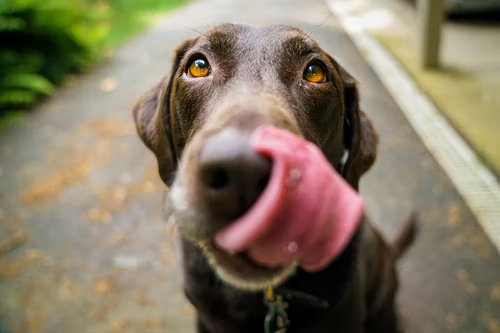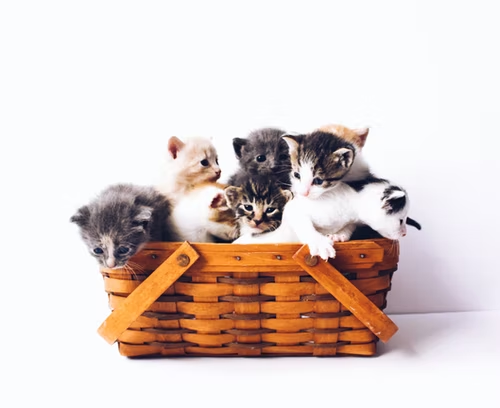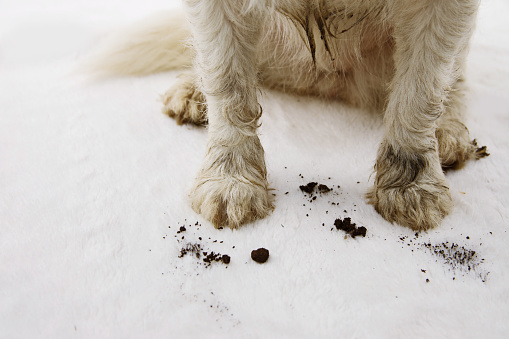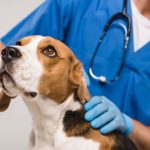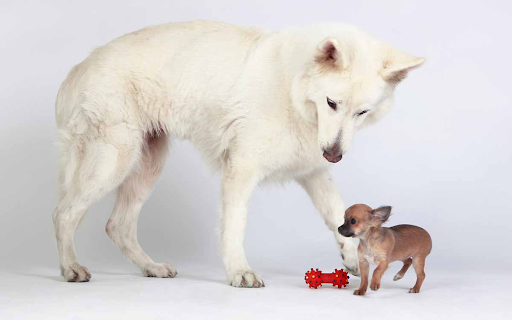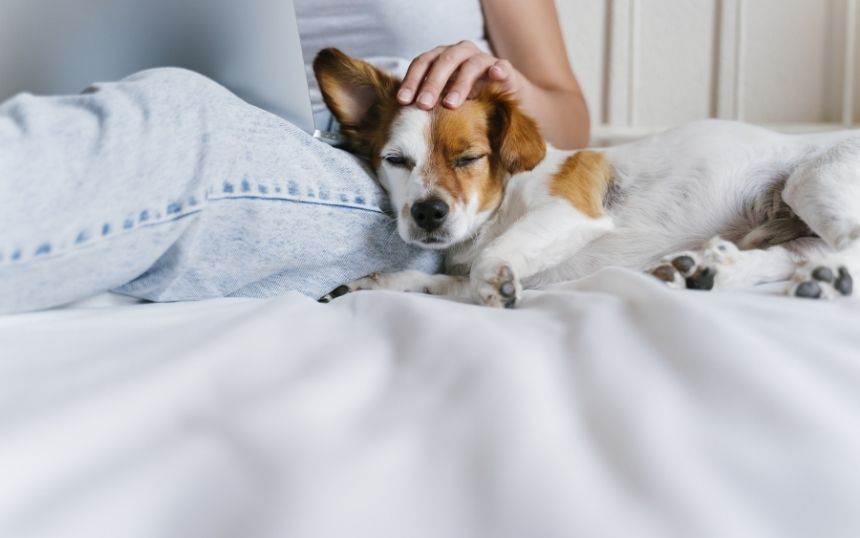Here are 10 ways we can protect pets from harm
Pets are part of the family. They love us, play with us, and keep us company. Pets help people cope with loneliness and loss. Pets help children deal with trauma or change. Pets provide love and happiness to countless families every day.

Here are 10 ways we can protect pets from harm.
- Don't abandon your pets
Pet abandonment is a serious problem that is on the rise in many countries. Sadly, this is because many pet owners are not willing to take up their responsibilities and often leave their pets behind. The problem with such an action is that it leaves the pet with no real home to go back to so they will be forced to fend for themselves. In recent years, people have been abandoning their pets more than ever because of this reason.
It's heartbreaking when owners abandon their pets because they lost interest in them, moved away and couldn’t bring them along, or simply didn’t want to deal with the pet anymore. Abandoned pets are often left behind with no food, water, or shelter and vulnerable to predators, harsh weather conditions and illness.
In some cases, the owners may not even realize that they have left their pets behind and might never find out what happened to them. In other cases, the owners might have been aware but did not do anything about it until they found out later.
If you want to help protect your pets from being abandoned, then you should keep them inside when you are away from home or when you are traveling.
- Don't allow your pet to roam free
Although it is tempting to let our pets roam free, there are many reasons why we should not allow our pets to do so. In this blog we will be discussing the hazards of allowing our pets to roam free.
The first reason is that roaming causes injuries. Pets can become injured from cars, dogs and other animals, getting caught in fences, drowning in rivers and lakes, and other causes.
The second reason is that roaming causes infections. Pets who roam can pick up fleas, ticks and other parasites which will cause them to become sick. They can also contract diseases such as distemper, parvovirus and rabies from other animals.
The third reason is that roaming can lead to pregnancies and unwanted litters of kittens or puppies. This means that there will be more homeless animals in need of good homes!
Finally, roaming can lead to aggression between animals competing for resources like food or mates. When there are conflicts between pets they may attack one another with devastating consequences!
So please keep your pet safe by keeping them leashed or penned at all times so as not to put them into any danger!
- Provide plenty of nutritious food for your pet
Pet parents have a big job. We need to protect our furry family members from everything from falling off of the couch to an upset tummy. Fortunately, providing plenty of nutritious food for your pet is a great way to help protect them from many common health issues.
Nutrition: Health Starts in the Kitchen
Food plays a vital role in the health of your pet. When your pet is healthy, it can help protect them against diseases and other health conditions that may cause serious problems.
A balanced diet helps pets maintain good health, which is essential for protecting them against common health problems like obesity or stomach upset. Just like humans, pets need a combination of carbohydrates, protein, and fat. And just like with people, there are varying degrees of quality when it comes to pet food products. Consider ingredients that you would use in your own kitchen: real meats, whole grains, and fruits and vegetables.
A healthy immune system is vital for protecting pets against viruses and infections. But things like stress, age and travel can weaken the immune system over time. A diet rich in antioxidants can help support a healthy immune system by neutralizing free radicals — unstable molecules that can cause damage to cells when they interact with DNA and other cellular components. In addition to a balanced diet full of fruits and vegetables, look for an antioxidant-rich supplement that contains Vitamin C and E as well as beta-carotene (a precursor to Vitamin A) for optimal immune system.
- Get your pets spayed or neutered
Spaying and neutering is not just a good idea, it's a great one. Here's why:
Widespread spay/neuter programs are a powerful and effective way to reduce the number of unwanted pets in our communities.
Spay/neuter reduces the number of cats and dogs entering our shelters and rescues, which translates into a reduction of euthanasia rates.
Spaying and neutering your dog or cat has a positive impact on their overall health. Spayed females won't get uterine infections or breast cancer, and neutered males won't develop testicular cancer or prostate disease.
Spaying or neutering your pet will also help prevent unwanted behaviors, including urine marking (spraying), fighting and roaming (neutered males are less likely to try to escape from your yard).
There are many myths about spaying and neutering, but the benefits far outweigh any perceived negatives.
And contrary to popular belief, it does not make pets fat!
- Keep their vaccinations up-to date
Vaccines are an important tool for preventing disease. They work because they contain antigens, which are weakened or killed forms of the bacteria or viruses that cause the specific illness. When a pet is vaccinated, their immune system reacts to these foreign substances by producing antibodies. The goal of this process is to create a memory that will allow the immune system to react quickly and effectively to these diseases if they are encountered in the future.
Vaccine reactions can occur in any pet but are most common in dogs or cats who have had previous vaccine reactions or those with underlying medical conditions such as allergies or skin disease.
- Keep identification on your pet
A pet owner's worst nightmare is losing their beloved dog or cat. If a pet becomes lost, the best chance of being reunited with it is to make sure it has a collar and tags with accurate contact information.
Even indoor pets can get out accidentally, so all pets should be wearing collars with tags when they're in the house. When they're outside, they'll also need a leash (or be in an enclosed area) to ensure that they don't get lost.
But what happens if your pet doesn't have identification? If another person finds it and takes it to an animal shelter or veterinarian's office, those places will scan for a microchip. If none is found, the finder can check for a rabies tag or city license tag to see if there's any way to identify the owner.
If there is no information available about ownership, then the finder will have to keep the animal until its owner claims it — which could take weeks or months.
To help ensure that your pet gets back home quickly if it gets lost, make sure it has at least two forms of identification: a collar with tags containing contact information and a microchip.
- Keep your house clean as possible
One of the most important elements of proper pet care is keeping your house as clean as possible.
While it’s quite common for animals to live in houses these days, it’s not a natural environment for them—and their owners who want to keep their pets healthy must take extra steps to make sure the house doesn’t have any toxins that could harm their pets.
Keeping your house clean as possible will help you protect your pets from the dangers of indoor living—and keep your house tidy at the same time!
The most important thing you can do is make sure your home is free of toxins and other harmful substances that can be poisonous to pets.
Even if you don’t have a dog or cat, there are many things toxic to both pets and humans, such as cleaning products and pesticides.
It’s also important to be careful with medications, especially prescription ones (such as antibiotics), which should never be taken by anyone but their intended recipient.
- Give your pets health care routine visits
Giving our pets regular health care checkups and vaccinations is one of the best ways to ensure their health, safety and well-being. It's much easier for a veterinarian to catch and treat an emerging disease than it is for us to take care of a sick pet.
When we take our pets in for regular visits, it's also easier for us to prevent the spread of diseases. Many serious diseases are highly contagious and can easily be transmitted from one animal to another by direct contact or through other vectors like food, water or soil. The only way we can stop this disease transmission is by keeping our pets healthy, which requires routine checkups and vaccinations.
A number of diseases can be managed or even cured with regular veterinary treatment and a proper diet. However, some diseases can't be cured once they reach a certain stage. This means that we must take preventive measures as early as possible to keep these diseases from damaging our pets' health beyond repair. This is especially true for animals that are at high risk for certain kinds of diseases.
- Use a pet carrier that fits in the backseat of your car
A carrier should be large enough for your pet, but not too big.
Pet carriers are just like seat belts or car seats: they help keep everyone safe while driving. They also provide a secure and comfortable space for your pet to ride inside your car.
Pet carriers come in different sizes, shapes and materials. Before you buy one, think about how big your pet is and how much space you have in your car.
If you're going to put a carrier in the front seat, make sure it doesn't block side airbags from deploying. If you can't put the carrier in the backseat, put your pet on a leash so he can't roam around the car and distract you.
- Going for a healthy diet
It is important to take care of ourselves as well as our pets. This means making sure we have a balanced diet, which will help us stay healthy and happy.
So, how can we make sure that we are giving our pets the best nutrition possible?
The first thing to do is make sure you know what food your pet is eating. If you don't know, then it may be time to consider buying a book on the subject or finding one online. You should also find out what kinds of foods your pet likes, so that you can make sure he/she gets enough of them every day.
The second thing to do is check the ingredients list on any food you buy. You will want to make sure that there is no sugar or artificial sweeteners in it. Sugar and artificial sweeteners are very bad for animals and can cause many health problems, including diabetes and obesity. You should also look out for foods that contain preservatives or dyes, because these are very bad for pets as well.
As this list details, there are many ways we can use to protect pets and make sure they live long, healthy lives. With proper care, they can grow up to be trusted members of our family who love us unconditionally.
For more helpful and informative insights, visit here.
